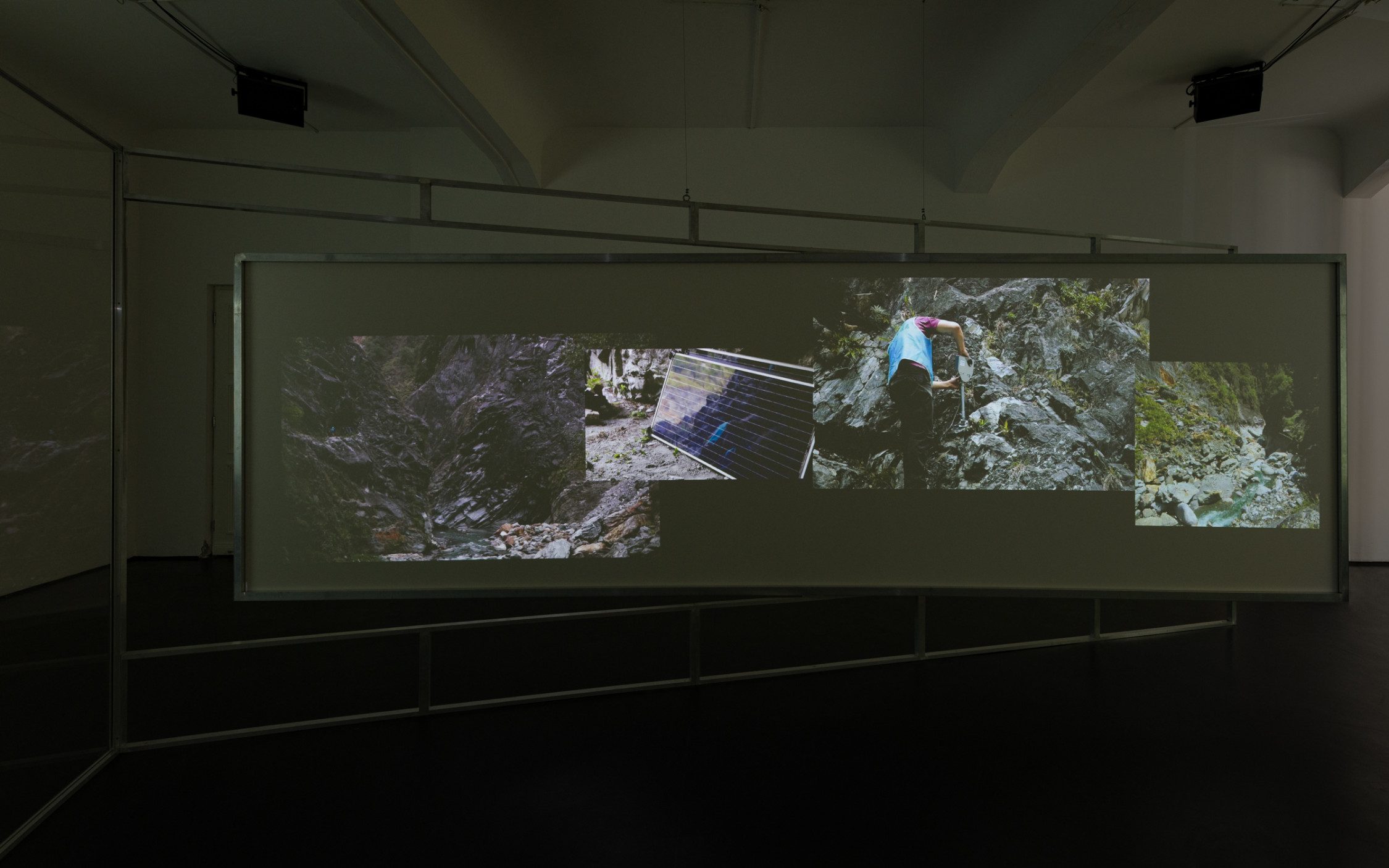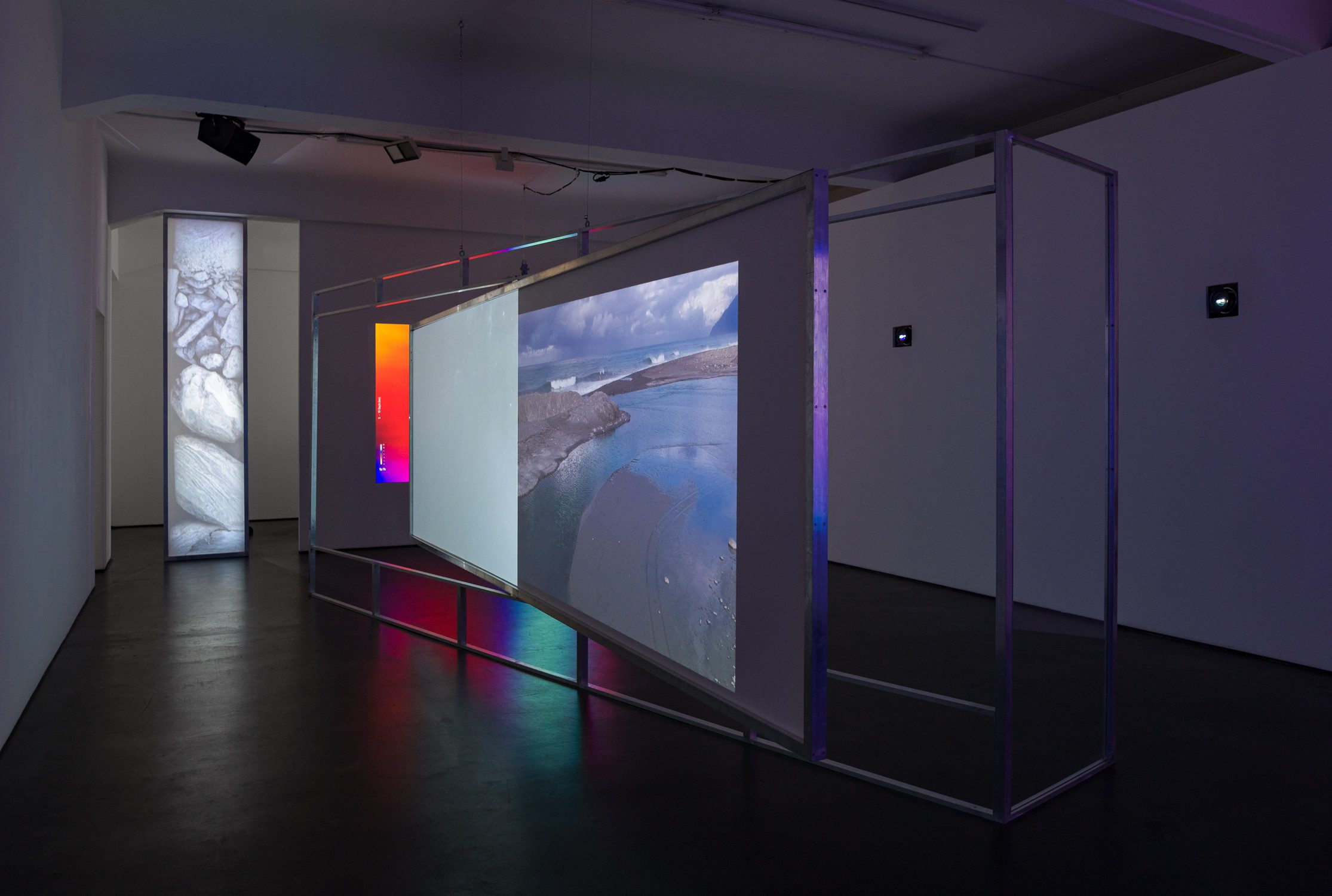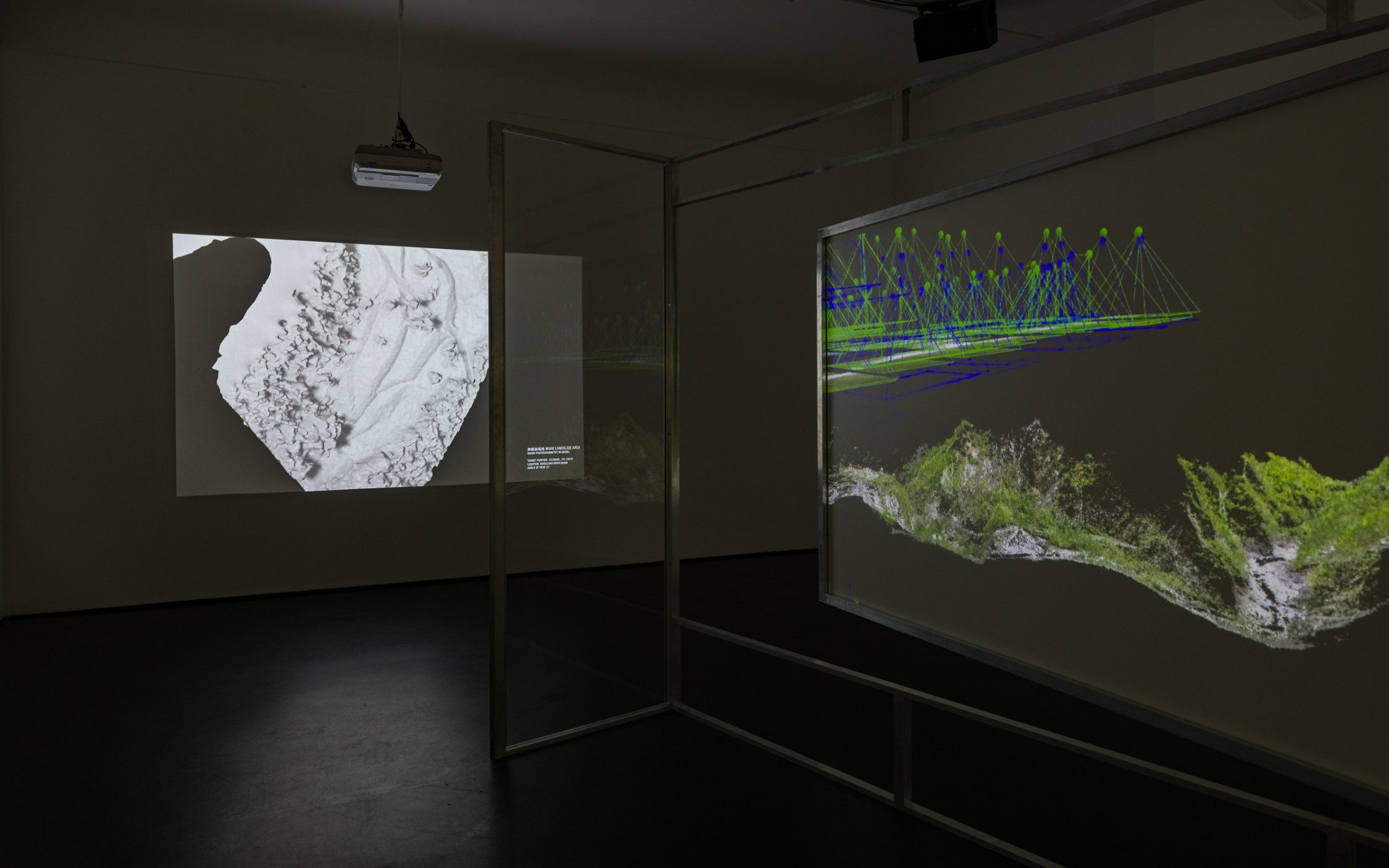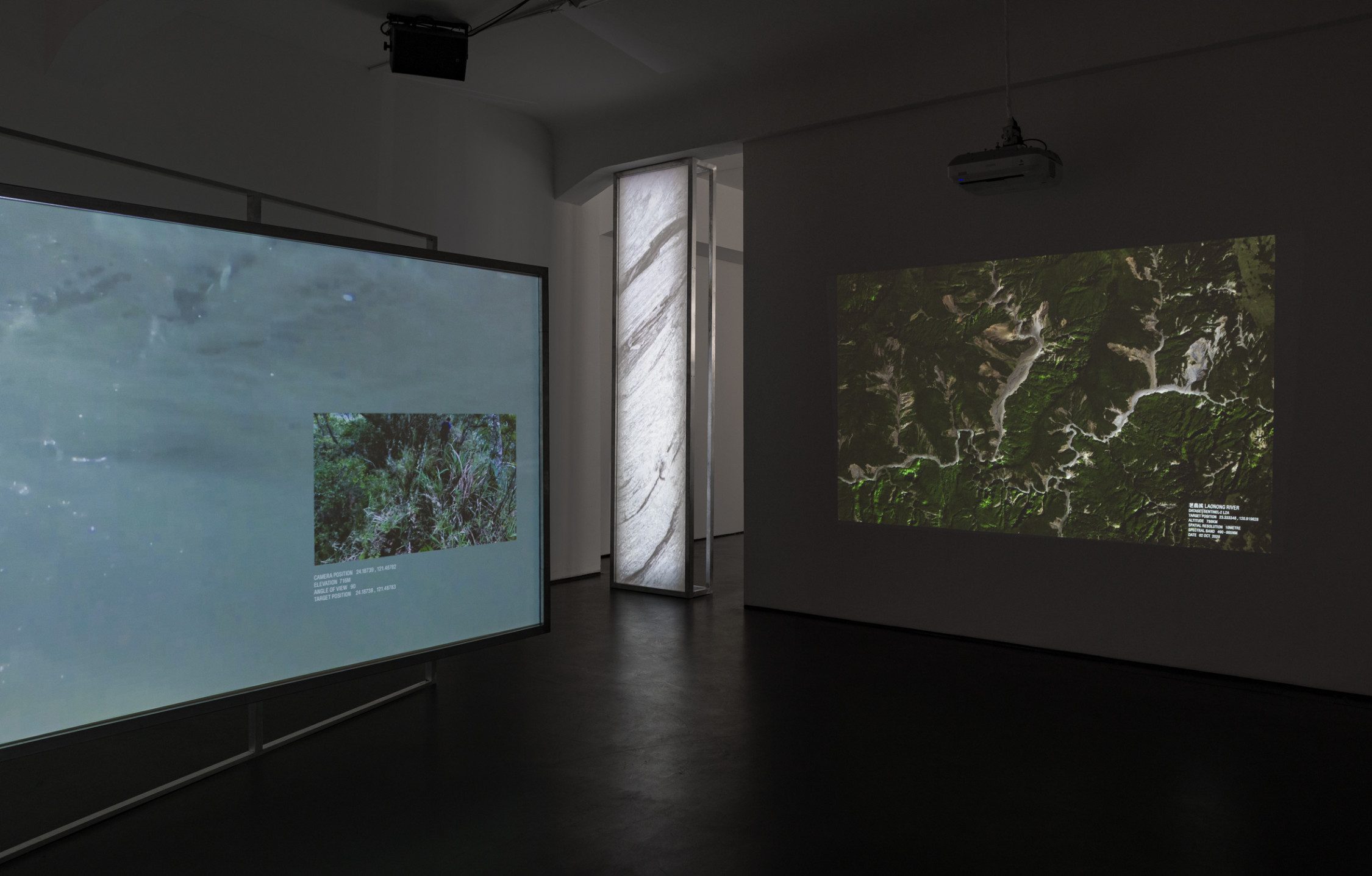







Su Yu Hsin
frame of reference
Sep 16 – Oct 16, 2021
Opening Sep 16 | 6–9 pm
Jussi Parikka, FAMU, Prague and Winchester School of Art (UK)
The Lab and the Field, the Image and the Instrument
Su Yu Hsin’s frame of reference (I and II) consists of images about images. The recursive story of environmental data offers a literal frame of reference about images that are captured in multiple windows. These moving images are nested inside other moving images. This assembly of views – scientists in action, rivers in flow, aerial views, simulations, and graphs – comes out of a patchwork of instruments of sensing that also have be nested somewhere on the field in order to transport data somewhere else. Not that the field, the lab, and data are considered separate. Any situated knowledge does not imply stand-point stability but the existence of relations, vectors of movement, and the painstaking work of trying to think what scales, what does not. Questions of proximity and distance become reversed so that any objective set of views cannot start as uninvolved distance. Instead, they have to share a terrain and be somewhere, sometime, and for some duration. The intimacy of scientific practice can be breath-taking.
These are some of the visual dilemmas of the Anthropocene landscapes that are not modelled anymore based on the genre of the landscape painting but abstract art: intensities of color, variation, and pattern that become epistemically meaningful for specialist analysis.
The composition of carefully crafted scenes is cinema about instruments. The scenes could be narrated as featuring scientific practice but there’s more at play as you can imagine. It is not that frame of reference is only about scientific practice of measurement and the critical zone of life that covers the planet but that the images become instruments that start to compose the space they are in. They are involved. They are based on but also feed forward observations.
These involved observations are, as Su Yu Hsin tells us, on the ground as the surface layer of life, but they are also off the ground; these spaces are seen through the capacity of the instruments which allow the space to lift from a specific place onto a (data) server across the planetary surface. Instruments that specify place, images that are composed in that space, and yet data that is circulating much beyond those locations. Planetary sensing, and planetary circulation of data are tightly interlinked.
frame of reference is a story of patchy images: particular views in particular time, composed and stitched together after being captured. At this particular time a certain strength wind was passing through this landscape. This patchiness is not mere limitation, but a condition of their own existence as partial views to any site and sight. It is only through the dynamic patchiness of any landscape, field, and observation that a pattern can be spotted; a systemic property determined by a heterogeneous ground.
Gradually, live shots make way for data-views; lidar imaging, simulations, satellite sensing and more. Any view taken is taken twice: first as moving images, then as moving data; first as recording of light and other signals, then as model and simulation composed of those signals. The proliferation of patchy images also makes us realise the change in what sort of images we are watching.
Change and flow are one example of the patches in motion, concretely visible on the image surfaces in Su Yu Hsin’s work. The centrality of flowing water as well as submerged views is one indication of circulation too. Any location of a patch is not necessarily contained by its site of observation and the hydropoetic moving images in frame of reference make a point about this aspect of knowing through means of aesthetics. None of this is about a stable thing but a process of composition: a river flow, atmospheric chemistry, soil composition, landscape migration. Only the scales of composition and change vary.
On the ground, in the air, and under water; the images are involved in the elemental mix. The environment is one of material capacity to be sensed as well as already sensing. Su Yu Hsin captures the double-aspect why we are drawn to it: the epistemic and the aesthetic as the two sides why a surface measurement of the Earth can become both data and sensation, measurement and affect. As such, the videos exhibited could easily be seen as perfect illustrations of the past years of art and science work with a special attention being paid to the posthumanities of environmental scales, the material agency of not only the scientists but also the landscapes, and the intensive site of the field that is immanent to the lab also the voice-over speaks of.
But more than illustration, frame of reference becomes a collaborator in all of those endeavours; alongside the field, the lab, and the database, also the image and the studio, the frame and its aesthetic references as a site of participation.
Further reading:
Horton, Zachary (2021) The Cosmic Zoom. Scale, Knowledge, and Mediation. Chicago: University of Chicago Press. Lowenhaupt Tsing, Anna; Mathews, Andrew S., and Bubandt Nils (2019) “Patchy Anthropocene: Landscape Structure, Multispecies History, and the Retooling of Anthropology” Current Anthropology Volume 60,e Number S20, https://www.journals.uchicago.edu/doi/full/10.1086/703391
Photos by Trevor Good
Technical realization: TRANZEPT GmbH
The exhibition in kindly supported by NCAF, National Culture and Arts Foundation